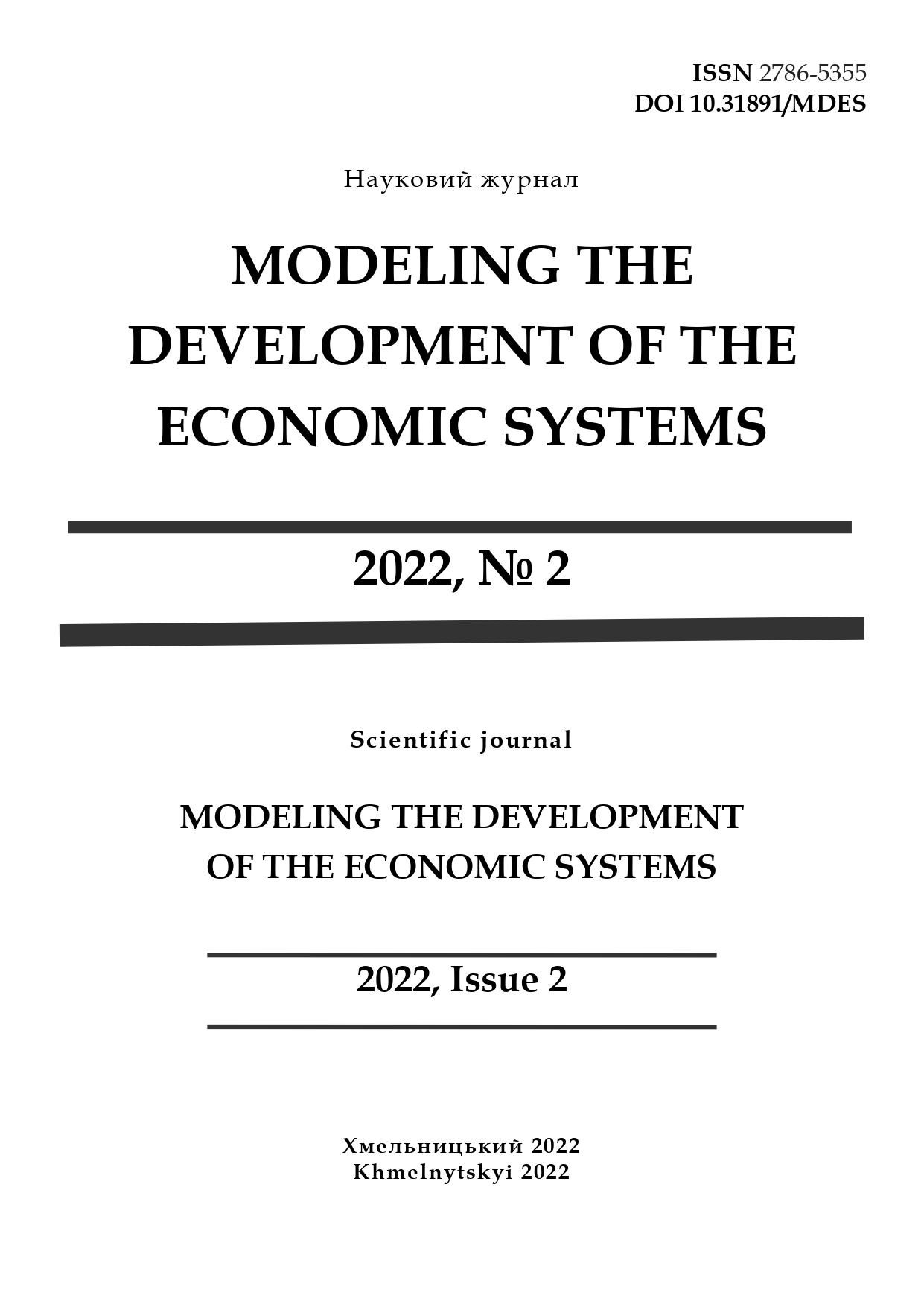DEVELOPMENT OF METHODS OF PLANNING FINANCIAL SUSTAINABILITY OF BUSINESS ENTITIES
DOI:
https://doi.org/10.31891/mdes/2022-4-4Keywords:
business entities, financial condition, financial management, financial stability, methodological approaches, planning, analysis, provisionAbstract
The purpose of the article is to improve the methodology of planning the financial stability of economic entities by developing and testing the appropriate author's approach.
The study reveals the relevance, first, ensuring the financial stability of economic entities in modern conditions; secondly, the use of the best methodological approaches for such purposes, which allows to ensure high quality management in this area and on which the financial security of the business entity largely depends.
The basic tasks of the methodology of planning the financial stability of the entity, which relate to the forecast balance sheet, generalization of expected changes in assets and liabilities of the balance sheet due to all targets, assessment of probable financial condition of the entity during and at the end of the planning period. ensuring financial stability and solvency.
Under the planning of financial stability of the entity should be understood as a systematic calculation of the main financial indicators of its activities for the operational (current) planning period and the choice of optimal answers to the criteria of optimality. Accordingly, the method of ensuring the financial stability of the entity involves determining the system of time and space and coordinated with the purpose and resources of measures and actions, as well as relevant targets aimed at fulfilling the mission and objectives of the entity at the appropriate stage its planned life cycle.
The applied value of the research results is that on the basis of the data of the researched business entity the forecast balance of assets and liabilities of the business entity for the end of 2022 is made. A criterion assessment of the planned parameters of financial stability was made and the planned balance of cash flows of the business entity for 2022 was developed.
The scientific novelty of the research results is to deepen the methodological and applied foundations of managing the financial condition of economic entities by developing an author's methodology for planning the financial stability of the enterprise.
References
Blank, Y. A. (2001). Financial management. Kyiv: Nyka-Tsentr. 528 р.
Vasyltsiv, T. G., Yaroshko О. R. (2018). Financial security of the enterprise: place in the system of economic security and priorities of strengthening at the post-crisis stage of economic development. Scientific Bulletin of LTEU of Ukraine. Vol. 21.2. pp. 132-136.
Gorjacheva, K. (2003). Fіnancial security of the enterprise. The essence and place in the system of economic security. Economіst. Vol. 8, pp. 65-67.
Zajukova, M. S. (2009). Theory of financial stability of the enterprise. Vinnycja: «Universum». 155 р.
Zubko, T. L. (2016). Assessment of the level of economic security of the communications company. Economy. Management. Business. Vol. 3. pp. 81-88.
Kutsyk, V. І., Lupak, R. L. (2017). Modeling of competitive positions of enterprises of the real sector of the economy in the domestic market. Business Inform. no 12 (479). pp. 244-249.
Lupak, R. L., Didych, А. М. (2017). Economic bases of ensuring the competitiveness of the enterprise in market relations. Scientific Bulletin of LTEU of Ukraine. Vol. 20.6. pp. 248-252.
Lisnichuk, O.A. (2019). Calculation of the rehabilitation potential of the enterprise: foreign experience and domestic practice. Innovative economy. Vol. 5(31). pp. 51–56.
Manojlenko, O.V. (2016). Approaches to assessing the resolution potential of temporarily insolvententities. Economy and state. Vol. 1. pp. 60-63.
Marcyn, V. S. (2008). Reliability, solvency and financial stability – the main components of the financial condition of the enterprise. Economics. Finanse. Law, no. 7, рр. 26–28.
Saveljjeva, A. O. (2018). Financial stability of the enterprise and the factors. Regional economy. Vol. 2. pp. 144-152.
Fokina, N. P., Bokij, V. I. (2003). Economic security of the enterprise – an essential component of financial stability. Actual problems of economics. Vol. 8 (26), pp. 98-110.
Cal-Calko, Ju. S. (2008). Financial analysis. Kyiv: Centr uchbovoji literatury. 566 р.
Samiilenko, H., Kyrychenko, S., Kravchyk, Y., Svinarova, H., & Shevchenko, A. (2021). Assessment of Investment Potential of Regions Under the Impact of the Potential-Forming Space Transformation. IJCSNS International Journal of Computer Science and Network Security, 21(10), 250-256.
Vasyltsiv, T. G., Lupak, R. L., Kunytska-Iliash, M. V. Strategic approaches to the effective use of intangible assets as a condition for strengthening the competitiveness of enterprise. Scientific Bulletin of Polissya. № 2 (14). pp. 8-15.




